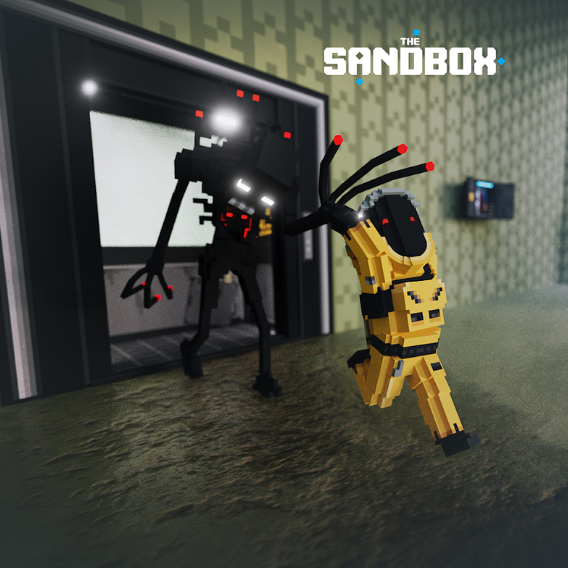Origin of Backrooms

The Backrooms is a famous online urban legend and creepypasta that has grown into a large-scale horror idea. The concept began with a post on 4chan's /x/ (paranormal) board in 2019 and has since developed into a wider phenomenon with its own Backrooms tales, games, and ideas. Here's a look at the Backrooms, what they symbolize, and why they've become so famous.
Origin of Backrooms
The Backrooms idea originated with a single photograph that was released online in 2019. This picture showed an unending, gloomy corridor of yellowish, aging office space, with fluorescent lights buzzing above. The following text elaborated on the concept: If you "noclip" (a phrase used in video games to go through solid things) out of reality, you can wind yourself in the Backrooms. The Backrooms is described as an infinite labyrinth of boring, featureless rooms that seem to extend forever, distinguished by yellowish wallpaper, soiled carpets, and the continual, irritating hum of fluorescent lights.
The legend surrounding the Backrooms evolved swiftly as others built on the concept, adding frightening features and spooky overtones. It transformed into a collaborative, crowd-sourced realm of disturbing encounters.
What Are the Back Rooms?
In essence, the Backrooms is a transitional area, one that seems both familiar and disturbing. It's defined as an other dimension or world that resides just beyond our own. Here's what is often included in the lore:
The Endless Hallways: The maze-like atmosphere is the Backrooms' most famous feature. The rooms are consistently uninspiring, with yellow walls, filthy carpets, and buzzing fluorescent lights. The absence of defining characteristics or true landmarks makes it unsettling, and the expanse seems limitless. The rooms are regarded as being too similar to office building interiors, yet lacking of vitality and purpose.
solitude and Loneliness: One of the most frightening characteristics of the Backrooms is the feeling of solitude. There are no other humans, just empty, antiseptic chambers reaching into eternity. The buzz of the fluorescent lights is continual, never ceasing or changing, making those who enter insane with the monotony. There is no way out — or at least no obvious way out, which adds to the claustrophobic terror.
The Dangers of Noclip: Noclip is a word that refers to circumventing solid borders in video games, which is often utilized to explore regions that the player is not allowed to visit. In the Backrooms, this concept is utilized to explain how someone may "slip" out of reality and end up in a parallel universe. The suggestion is that if you end yourself in the Backrooms by mistake, you're likely to become permanently lost. This concept evokes a basic dread of being lost in an unending and unyielding expanse.
Monsters & Entities: As the Backrooms' legend evolved, it became evident that it was more than simply a haunted, empty area. Some versions of the Backrooms have bizarre, dangerous beings lurking in the shadows, ready to harm anybody who travels too far into the labyrinth. These creatures are often depicted as twisted or monstrous, with some accounts referring to horrific monsters such as "The Smilers," who materialize in the darkness, or other unknown horrors that feed on the lost souls imprisoned inside the Backrooms.
Backroom Levels: The Backrooms idea has evolved into many "levels," each more deadly and creepy than the previous one. These tiers differ in appearance and offer various threats:
Level 0 is the first and most typical level of the Backrooms, consisting of limitless yellow halls.
Level 1: A darker, more industrial atmosphere, often characterized as damp and populated by more hostile monsters.
Level 2: A series of maintenance tunnels that get progressively hostile and hazardous.
Levels 3 and above get more odd and unidentifiable, frequently including unusual settings or twisted realities.
The advancement through these stages is often a nightmare for anybody lost, since the farther one travels, the more horrifying the environment gets.
Why are the backrooms so creepy?
The Backrooms' popularity stems from its capacity to evoke various common fears:
Fear of the Unknown: The Backrooms are unknown and inaccessible. The more you think about it, the more troubling it is. There is no obvious explanation for why the area exists, how people get there, or how to leave.
Liminal Spaces: The Backrooms is often mentioned as an example of a "liminal space" - a location that seems familiar yet is unpleasant because it is empty. These include vacant malls, abandoned airports, and silent office buildings after hours. Liminal environments are psychologically unsettling because they provide the sensation of being "in-between" someplace, neither here nor there.
Isolation: The Backrooms are places where people are alone, frequently unable to connect with others or return to their daily lives. This sensation of loss and powerlessness strikes a deep chord with individuals, particularly in today's world, when isolation may seem like a perpetual concern.
Monotony & Repetition: The never-ending labyrinth of similar chambers with the same buzzing lights is tedious and unsettling. The repetitive nature of the surroundings exacerbates the mental stress, making escape even more difficult.
The popularity of the backrooms
The Backrooms idea has grown beyond online forums. It has affected many types of media, including:
Indie game developers have created many Backrooms-inspired horror games in which players must traverse a labyrinth, dodge creatures, and attempt to live. Some of these games, such as Enter the Backrooms and Backrooms: The Game, employ the liminal area motif to heighten suspense and anxiety.
Videos & Short Films: The Backrooms concept has been explored in short YouTube films and video series. Some authors have created intricate tales in which individuals unintentionally noclip into the Backrooms and attempt to escape or live.
Urban Legends and narrative: As with most creepypasta, the Backrooms have inspired fan fiction, personal tales, and other forms of creative narrative. People continue to add layers to the mythology, creating elaborate descriptions of what happens to those imprisoned or how to live in this terrifying environment.
Conclusion
The Backrooms plays on the dread of the unknown, loneliness, and the weird, making it an engaging piece of online horror history. Its simplicity – a huge, never-ending labyrinth of ordinary rooms — has attracted viewers, as have its disturbing mood and possible hazards. Whether via games, movies, or stories, the Backrooms has grown into a contemporary urban legend, addressing existential dread and the notion of sliding out of reality into a world with no escape.


